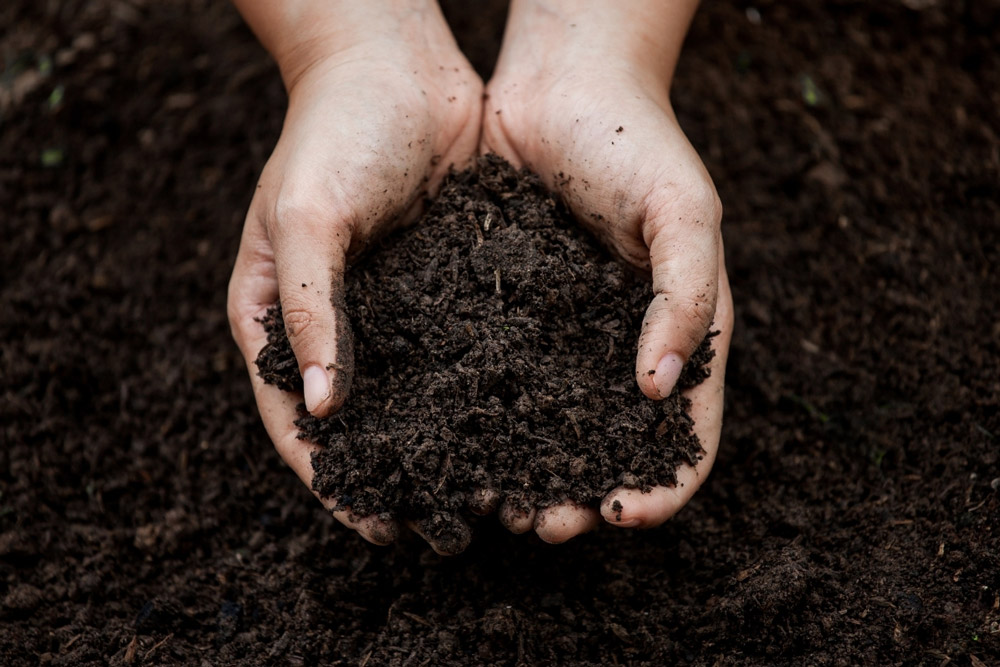
It’s never too late to start using sustainable soil management practices. If you want to have healthy soil, you need to treat it like one of your most valuable investments.
Almost one thousand hectares of cultivated land continue to be lost every year, according to Science X. It means that our society receives fewer and fewer services delivered by the soil, such as filtering water and storing carbon.
After multiple seasonal uses, soil loses its nutrients and organic matter. If you leave it unattended, your yields might decrease significantly. Whether you’re a gardener, home grower, or farmer, protecting your soil from depletion should be one of your top priorities.
Healthy soil is high in organic matter content, consists of many nutrients, and has a balanced structure. It is excellent for ensuring proper plant growth and helps you save money on various inputs.
Let’s take a look at how you can sustainably boost your soil health to help your plants grow stronger roots and become less susceptible to environmental stressors.
Sustainable Soil Management Tips
“Soil is extremely important to the agricultural process, and we want to make sure that it is managed to the best of our ability. This is because soil quality affects the resulting produce. If we want the soil to be continuously productive, there should be measures put in place to ensure that it will always be healthy and ready for planting.
Some examples of the sustainable use of soil are (1) creating a diverse mix of crops with a rotating schedule, (2) practicing organic and proper pest control to ensure that the soil is always healthy and safe, and (3) integrating the farm animal and crop operations by arranging both close to each other and encouraging a healthy ecosystem in between both.”
Casper Ohm, Marine Biologist & Editor-in-Chief at Water Pollution
Decrease Tillage
As you might already know, tilling can ruin the soil environment, and that’s why you should only use it to improve problem areas. Tilling can also promote the growth of weeds by bringing them to the surface. This can lead to the weeds “stealing” the main crop’s nutrients and reducing the crop yields.
Alternate Crops
Since different crops require different types and amounts of nutrients in the soil, crop rotation is essential for balancing them effectively. Some crops might also increase the availability of certain nutrients, which can be very beneficial for the following crops you decide to grow. Crop rotation can also help you prevent soil erosion.
Store Carbon in the Soil
“One of the most sustainable uses of soil is to store carbon in it. The soils of the world have a significant capacity to store carbon and already have more carbon than there is currently in the atmosphere. By working on the right practices, farmers and ranchers can very effectively increase the carbon stored in their soils, removing CO2 from the atmosphere, and thus doing their part to reduce climate change. Now, many major corporations are willing to pay farmers to store carbon in their soils, making this a significant secondary source of income for growers. At ConserWater, we are working with a growing list of Fortune500 companies who pay to have farmers remove CO2 from the atmosphere!”
Aadith Moorthy, Founder & CEO at ConserWater Technologies
Enhance Soil Organic Matter
Healthy soil is full of life, aka worms and insects that play a crucial role in nutrient cycling. It means that they help boost the process of breaking down crop residue and turning it into organic matter in the soil. Once the process is complete, your plants can take full advantage of those nutrients while you can focus on using more specific fertilizers instead of “just in case” spraying them all the time.
Cover the Soil Surface
Covering crops is another way to enhance your soil makeup. Using cover crops also increases the number of nutrients in the soil and prevents soil erosion. If you leave your fields uncovered during the winter months or after the harvest, they might become more prone to erosion from rain and wind. That’s why covering your crops will help you create a healthy foundation for springtime crops.
Use Soil as a Compost Starter
“One fun and sustainable use for soil is starting a worm compost bin with it. Back in October 2019, I ordered some live worms online, then used the rest of a bag of potting soil as the starter soil for my DIY worm bin. Fast forward a year, and I still have a lively worm bin in my garage, which I use to compost my food scraps. The finished compost it produces is great for a garden, and composting is better for the environment than throwing food away. When food goes to a landfill, it decomposes in a way that produces lots of methane, a potent greenhouse gas.”
Alex Beale, Owner of Footprint Hero
The Takeaway
As long as you work for your soil, it’ll work for you in return. Healthy and nutrient-rich soil is a foundation of high-quality crops and better yields. By using sustainable soil management processes, you also contribute to making human activities compatible with this valuable resource.
If you know of other effective, sustainable uses of soil that we haven’t mentioned, please let us know in the comments below!
At EZ-Screen, we manufacture high-quality topsoil screeners to handle everything from topsoil, gravel, aggregate, and wood chips to street sweepings. Don’t hesitate to contact us if you need help choosing a screening plant for your specific landscape or farming operation or have any questions about our products.




Leave a Reply